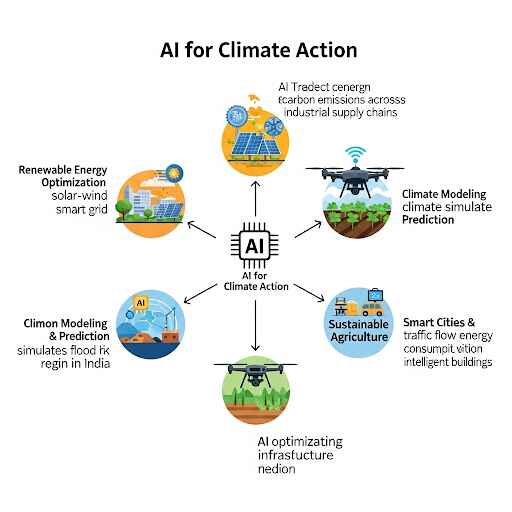Look outside, it’s either flooding, on fire, melting, or all of the above. Climate change isn’t waiting for humanity to “figure it out.” But guess what is figuring it out? Artificial Intelligence. Yep, the same tech that writes your emails, recommends what to binge next, and makes deepfakes that scare governments is now stepping up to save the planet.Now, AI for Climate Change..
The AI for Climate Action Award 2025, announced on June 2, 2025. It’s not just a headline. It’s a wake-up call (and a huge opportunity) for techies, environmentalists, and everyone who’s tired of doom scrolling climate news and wants to actually do something.
AI + Climate = The Smartest Collab of the Century
Let’s get one thing straight,
AI isn’t just about chatbots and creepy robot dogs. It’s now being hardwired into the very ecosystems we’re trying to save. From precision agriculture to energy-efficient cities, we’re seeing AI evolve from a digital sidekick to a climate superhero.
So, how exactly is AI saving our overheating, storm-ridden, iceberg-melting world?
1. Optimizing Renewable Energy Systems
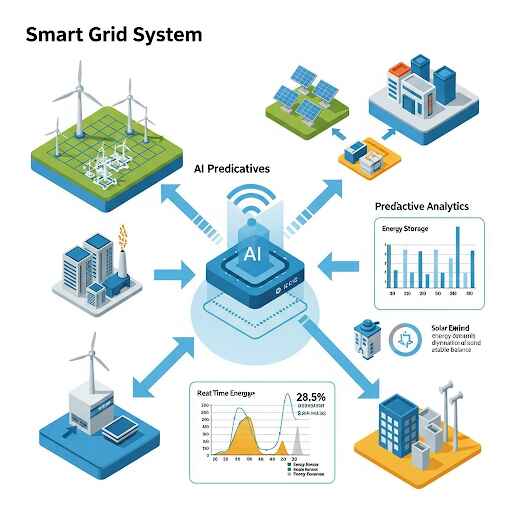
AI is revolutionizing how we manage clean energy. Think:
- Smart forecasting of wind and solar energy outputs.
- Balancing supply and demand in real-time using predictive models.
- Microgrid optimization for remote or rural areas.
- Energy storage efficiency (bye-bye, blackout panic!).
Case in point: Google DeepMind’s AI reduced data center cooling energy by 40% , imagine that applied to the entire grid.
Implication: With AI, renewable energy becomes more reliable than your electricity provider during monsoon season.
2. Climate Modeling and Predictive Analytics

What if we could predict floods, droughts, and heatwaves with near-perfect accuracy? Oh wait, AI can.
- Processes satellite imagery + sensor data to refine climate models.
- Enables early warning systems in vulnerable regions.
- Predicts glacial melt in the Himalayas (hello, India!).
Real-world review: In 2024, an AI model developed by IIT Kanpur and IBM saved hundreds in Uttarakhand by predicting landslide-prone zones days in advance.
Implication: Disaster management becomes smarter, faster, and far less tragic.
3. Sustainable Agriculture and Food Systems
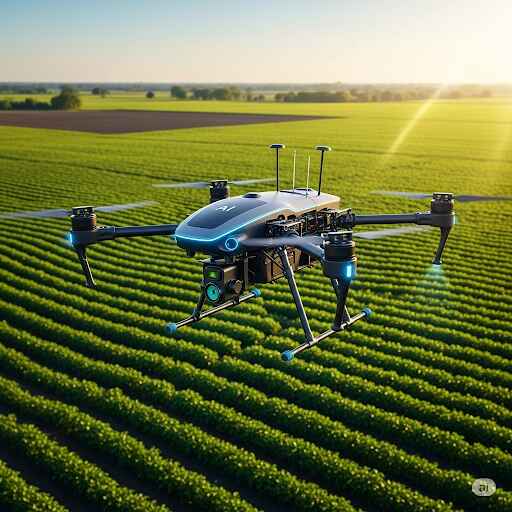
From farm to table, AI is getting its hands dirty, literally.
- Precision irrigation using real-time soil moisture sensors.
- Pest detection before infestations spread.
- Crop yield predictions to prevent food waste.
- Water resource management that doesn’t drain rivers dry.
Example: Indian startup Crop In uses AI to help farmers increase yields by up to 30%. That’s not just sustainable, it’s deliciously effective.
Implication: More food, less waste, fewer chemicals. AI just went organic.
4. Carbon Management and Decarbonization
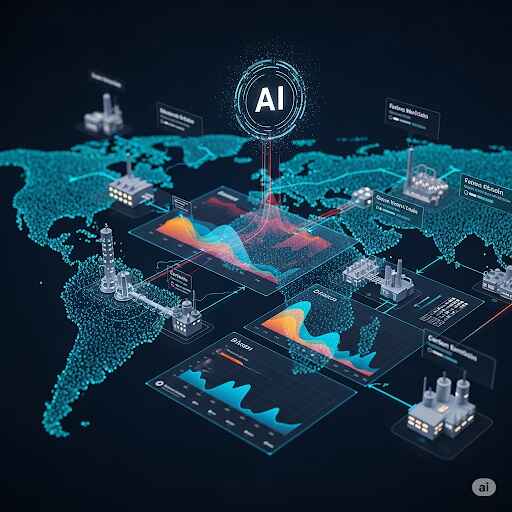
Carbon emissions? AI’s coming for those too.
- Optimizes energy use in manufacturing.
- Enhances Carbon Capture & Storage (CCS) with real-time analytics.
- Develops carbon removal algorithms (yes, code can eat CO2!).
Hot Fact: Microsoft’s AI-driven sustainability strategy helped them go carbon negative in 2023 — and they’re now offering the blueprint.
Implication: Cleaner air, cooler Earth, and maybe (just maybe) a chance to reverse some damage.
5. AI For Climate Change!
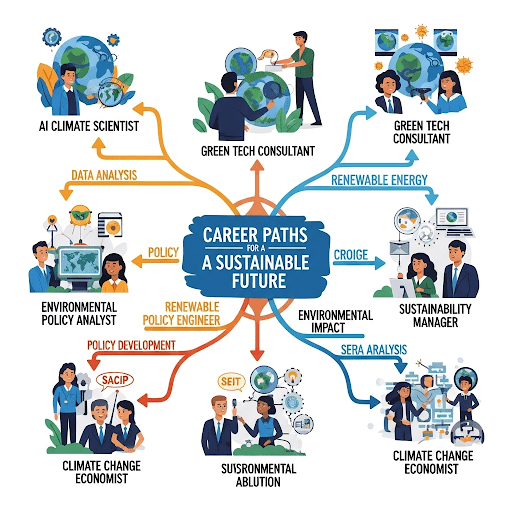
This isn’t just about saving the planet, it’s about building your future while you’re at it.
Emerging Roles:
- AI for Climate Scientists
- Sustainability Data Analysts
- Green AI Engineers
- Climate Tech Product Managers
You don’t need a PhD in rocket science (though it helps). Just start learning where the impact is highest.
Implication: You get paid to fight climate change with cutting-edge tech. Win-win
Final Thoughts: AI For Climate Change
Sure, AI can be creepy. But it can also be climate-saving cool. The AI for Climate Action Award 2025 isn’t just a shiny medal, it’s a reminder that the tech of tomorrow needs humans who care today.
So don’t just read the headlines, be the headline. Whether you’re a coder, a climate nerd, a student, or someone who just wants to breathe clean air, there’s space for you in this revolution.
